It’s a beautiful, sun-drenched morning and we’re driving through tranquil rolling hills, past the occasional vineyard and olive grove, and tiny picture-perfect rural villages. We’re so distracted by the scenery that it’s a while before we realise the roads are getting narrower, and we haven’t seen another car for about half an hour. We’re used to our temperamental GPS app sending us the wrong way down one-way streets and impossibly narrow laneways, so we’re ready for some car drama.
This time however, the GPS gods are smiling on us, and we spend the next hour or so cruising a stunning and unexpected detour of the back roads between the tiny nation of San Marino and the Italian hill town of Urbino. Just one of the delightful, unplanned experiences of a medieval hill town road trip through central Italy.

It’s a region that abounds with medieval fortified towns: some quite large, many not much more than a memory with an abandoned castello on a hillside overlooking the autostrada. These hill towns, with their elevated defensive positions atop mounds and clifftops, developed through the ages from Roman times to the Renaissance with thick defensive walls, watchtowers and fortified gates. The protection was necessary during a time of feudal power struggles and the constant squabbles of noble families seeking more power and wealth.

We’re spoilt for choice when it comes to deciding our hill town itinerary. In the end, we opt for a classic journey that takes in the World Heritage centres of Urbino, Assisi, Orvieto*, San Gimignano and Siena (San Marino, as a separate country, gets a blog post all its own). One week later, we’ve covered some serious ground and our legs are burning, but we’re on a total hill town high.
Urbino
Urbino puts the ‘hill’ in hill town. Our introduction to its historic streetscapes is a steep cobbled dip from the Porta Santa Lucia followed by an even steeper hike up an alley to our hotel, where we arrive gasping for air.
There are many reminders that Urbino is the home of Renaissance master Raphael, none moreso than the lovely 15th century Casa Natale Di Raffaello, the house where he was born, and where you can see a few of his (and his father Giovanni Santi’s) works.
In addition to Raphael’s house, our walking tour highlights include taking in the atmosphere around Piazza della Repubblica; visiting the 15th century Palazzo Ducale, with its beautiful apartments and galleries displaying works by Raphael, Titian and Signorelli; strolling around the huge neoclassical Duomo; and spending time in the tiny 16th century chapels: the Oratorio di San Giuseppe and the atmospheric Oratorio di San Giovanni Battista, with their colourful, well-preserved frescoes.




Urbino views: out our window, up at the Duomo, down a narrow street, inside San Giovanni.
We finish the day by walking up to the Parco della Resistenza to sit with hordes of gossiping, canoodling local students (as a University town, students make up a large proportion of Urbino’s population) enjoying the spectacular views over the town, before heading back down to the centre of Urbino to sip on the local Verdicchio wine and people watch.
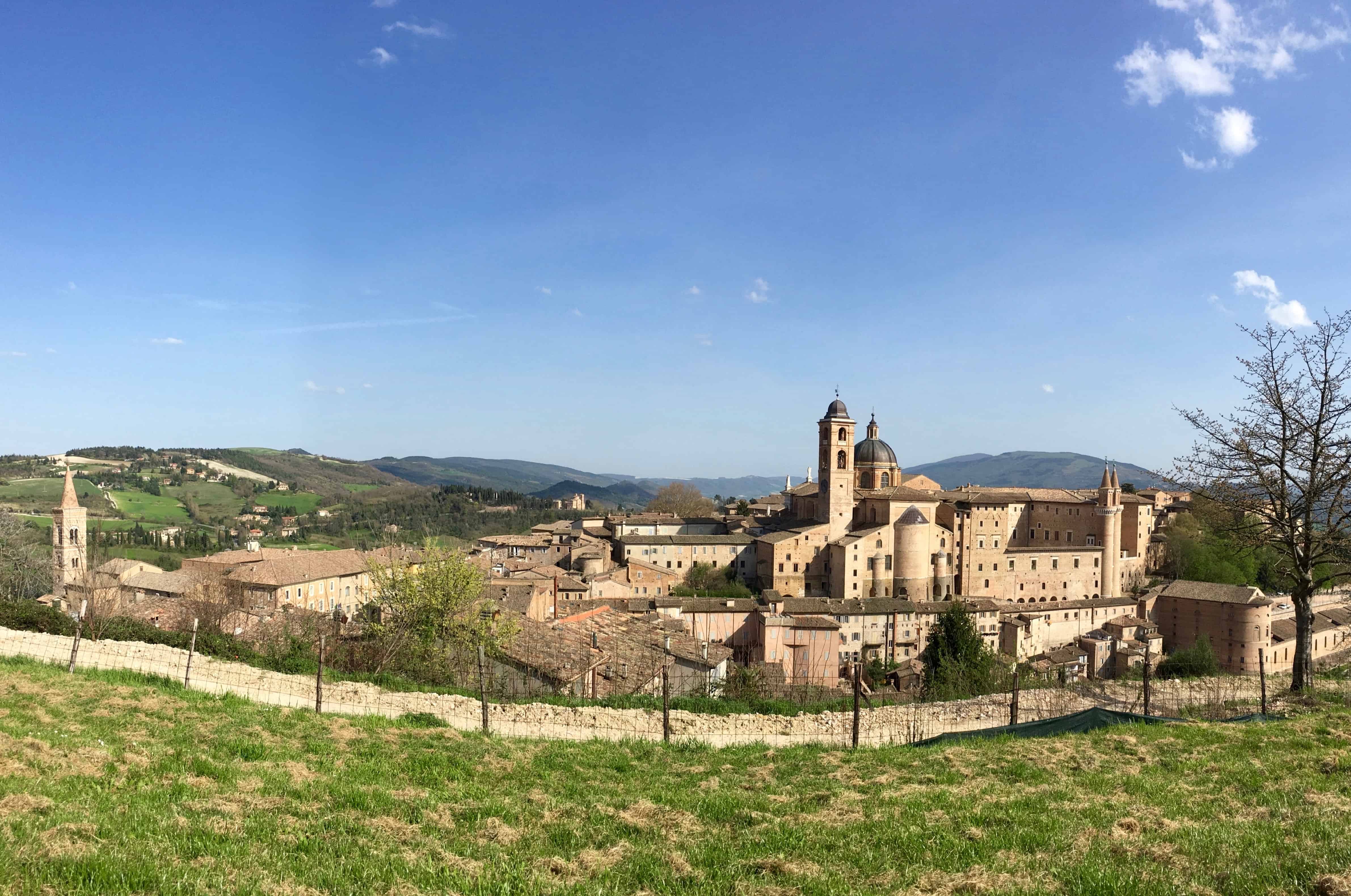
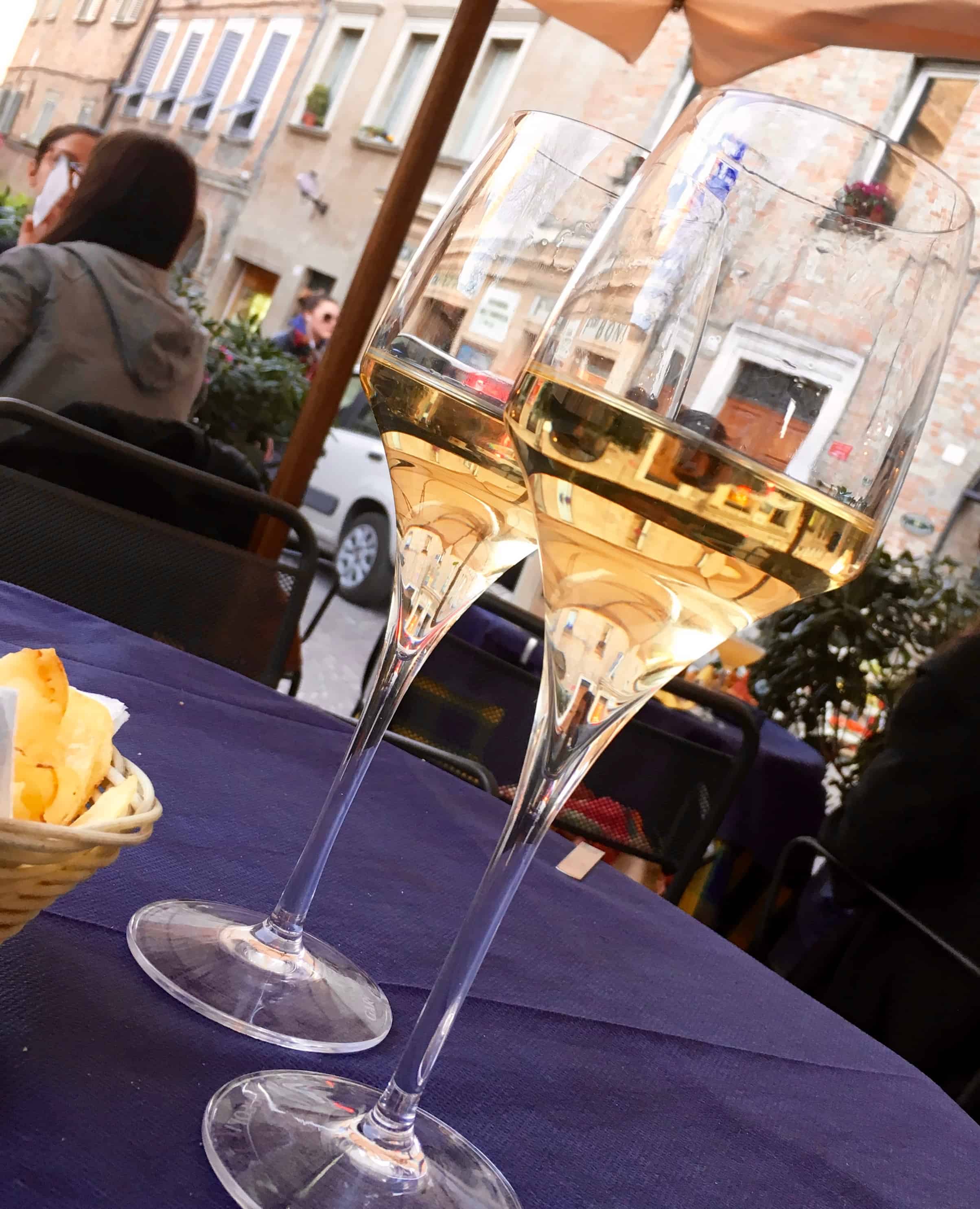
Assisi
It’s easy to lose days in the fascinating pilgrimage town of Assisi – and we do. From the huge, ornately decorated Basilica of Saint Francis to the tiny, humble chapel where the Franciscan movement was born, and from subterranean Roman ruins to fortresses in the sky, Assisi is a must-see for any visitor to the region, pilgrim or tourist. We find so much to do here, in fact, that it’s earned its own blog post.
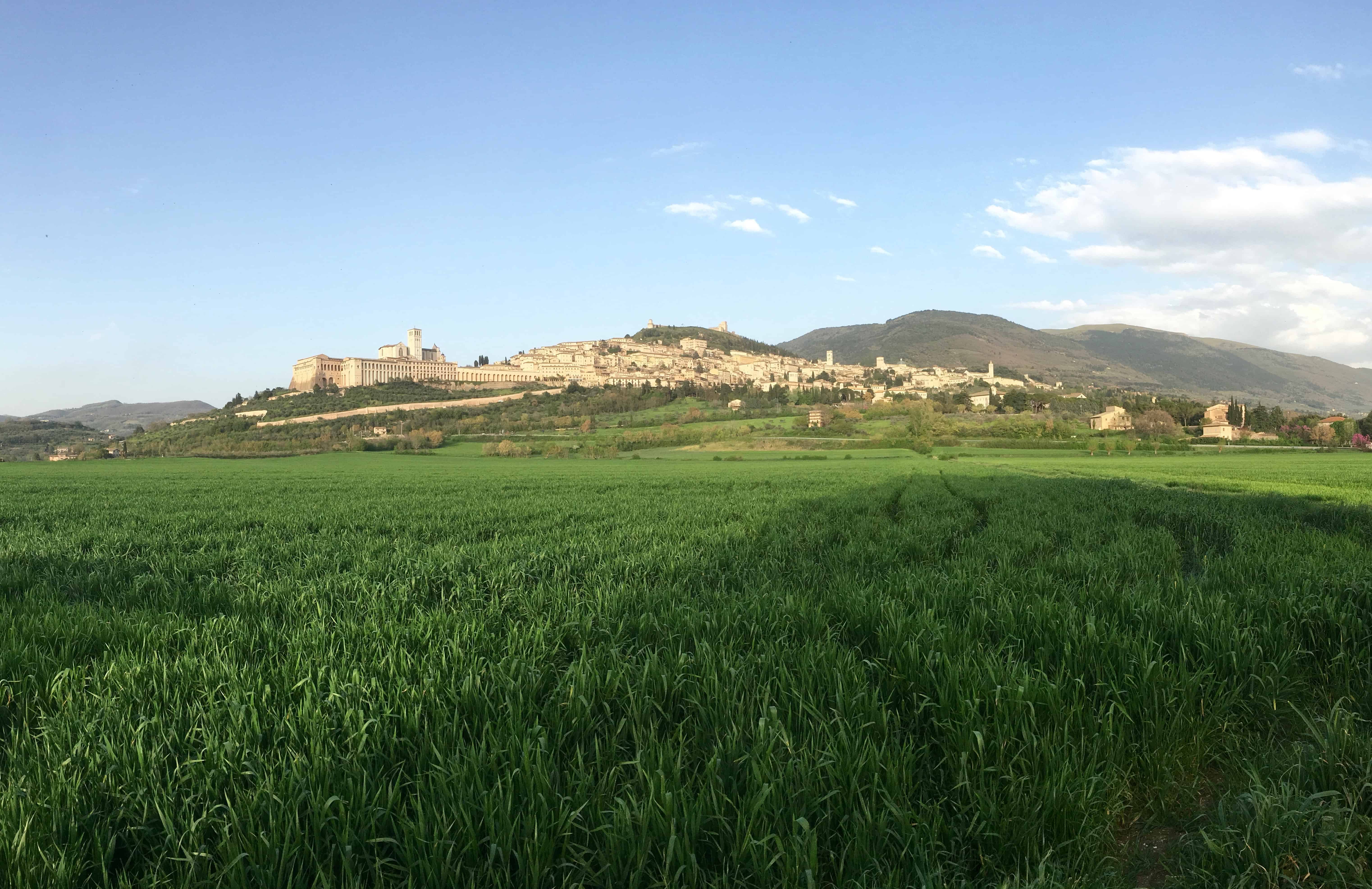
Orvieto
Orvieto balances like a hat on the head of a sheer volcanic plug rising straight up out of the plain. It makes for an impressive sight as you approach from ground-level.
Like many visitors to the city, we start our orientation at Piazza del Duomo, before heading underground on a tour to see some of the 440 caves that have been excavated into the soft tufa over the past 2,500 years and used variously for food storage, wells, cellars and air raid shelters. We’re told that during sieges many of the caves were used to keep and breed pigeons, a delicacy still available on local menus (we aren’t tempted).
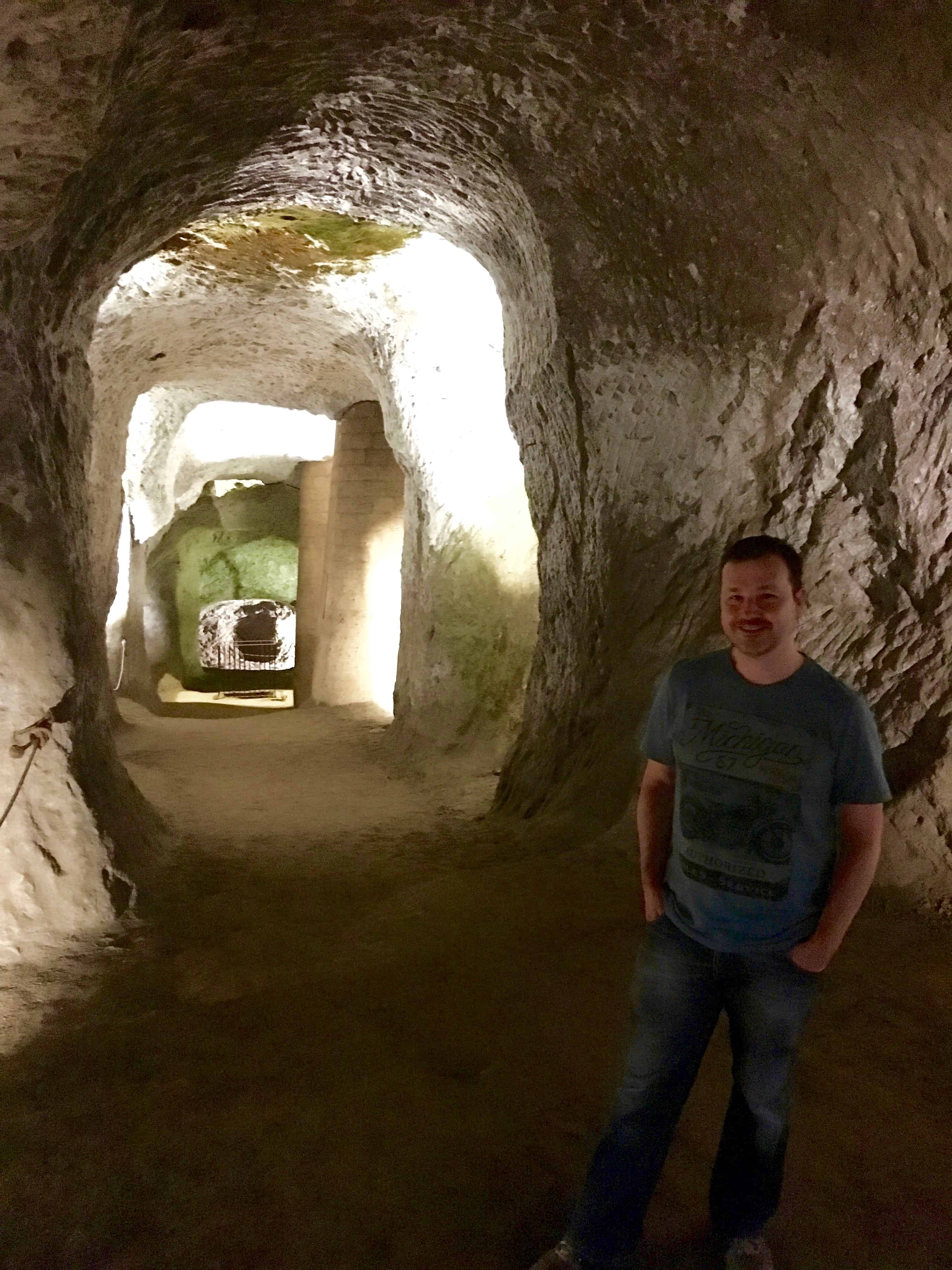
The remainder of our whistle stop tour includes the plunging depths of Pozzo di San Patrizio (St Patrick’s well) – a 16th century engineering feat with 248 steps and 70 windows.
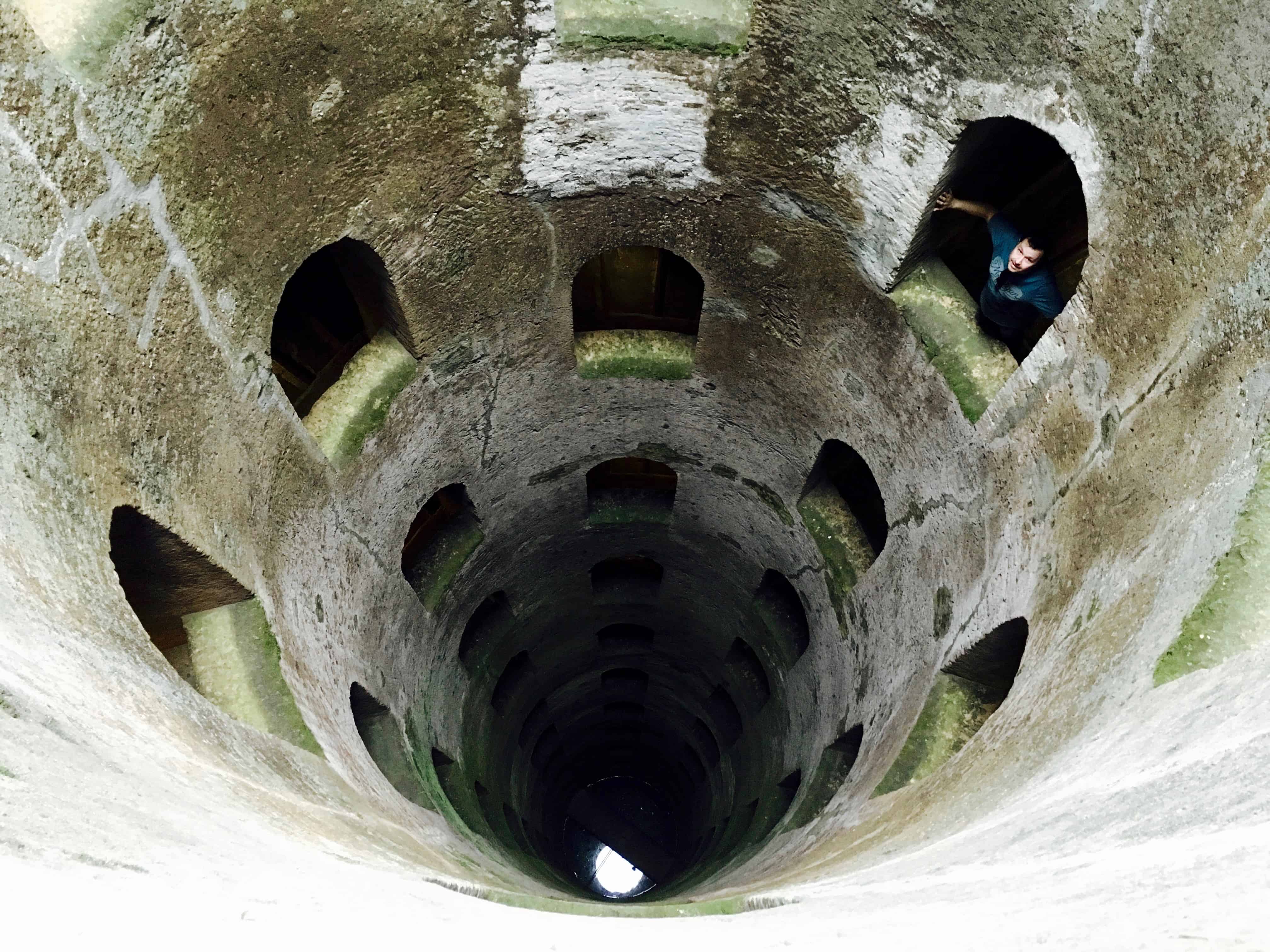
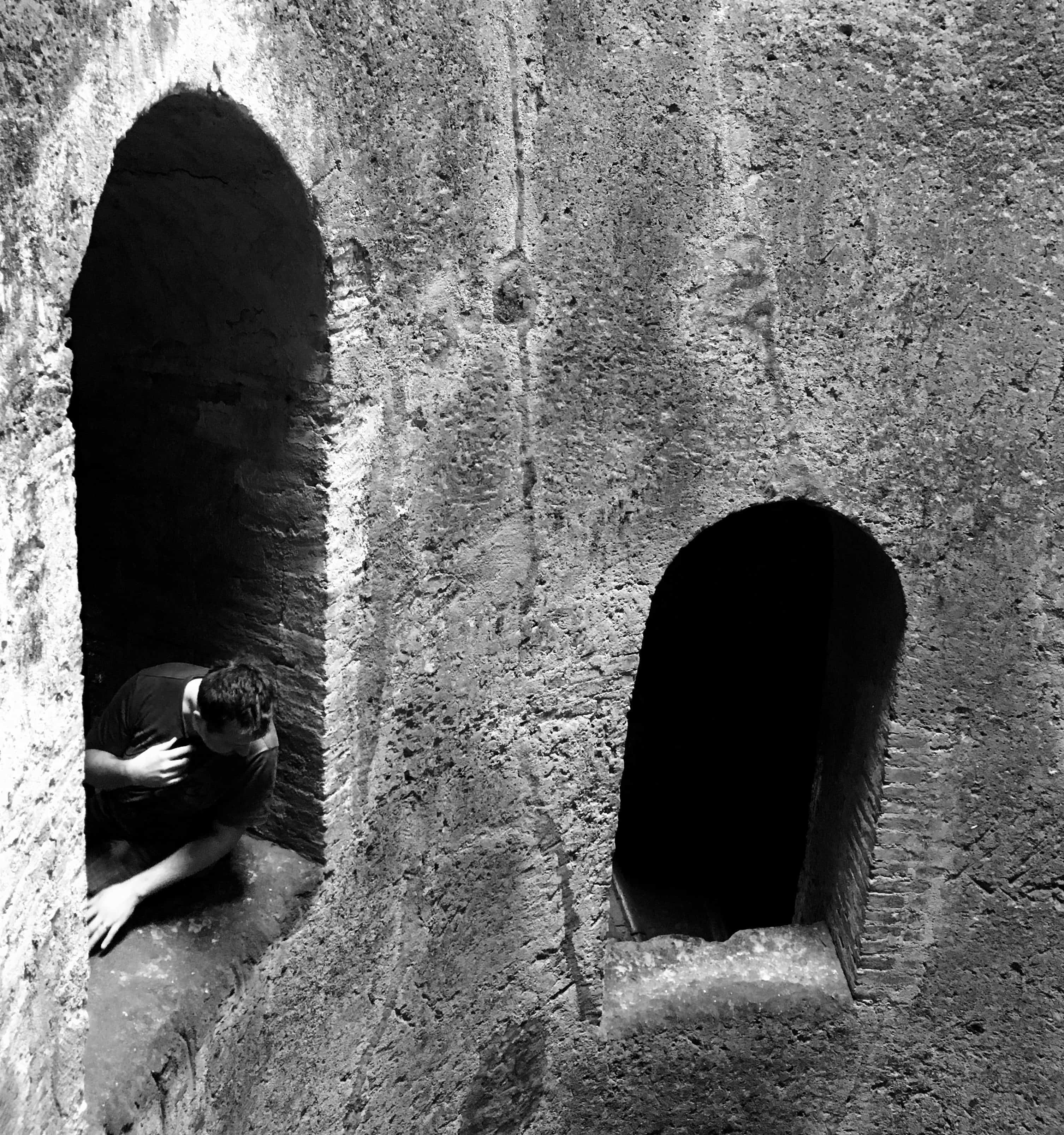

Descending into the awesome depths of St Patrick’s Well…all smiles till we start the climb back up.
We also visit the Chiesa di Sant’ Andrea, with its unique ten-sided tower; the 12th and 13th century frescoes of the Chiesa di San Giovenale; and the interesting sculptures and artworks of the Museo dell’Opera del Duomo.

The real highlight of our visit however is the stunning Duomo. Most people charge inside on arrival to marvel at the famous frescoes of the Last Judgment by Luca Signorelli. While the paintings are deservedly celebrated, it’s an effort to drag us away from the front of the building in the first place – we’re mesmerised by the marble reliefs on the church façade showing scenes from Genesis, the Old Testament, the life of Christ, and the Last Judgement. These entrancing works are attributed to Lorenzo Maitani and are well worth lingering over.

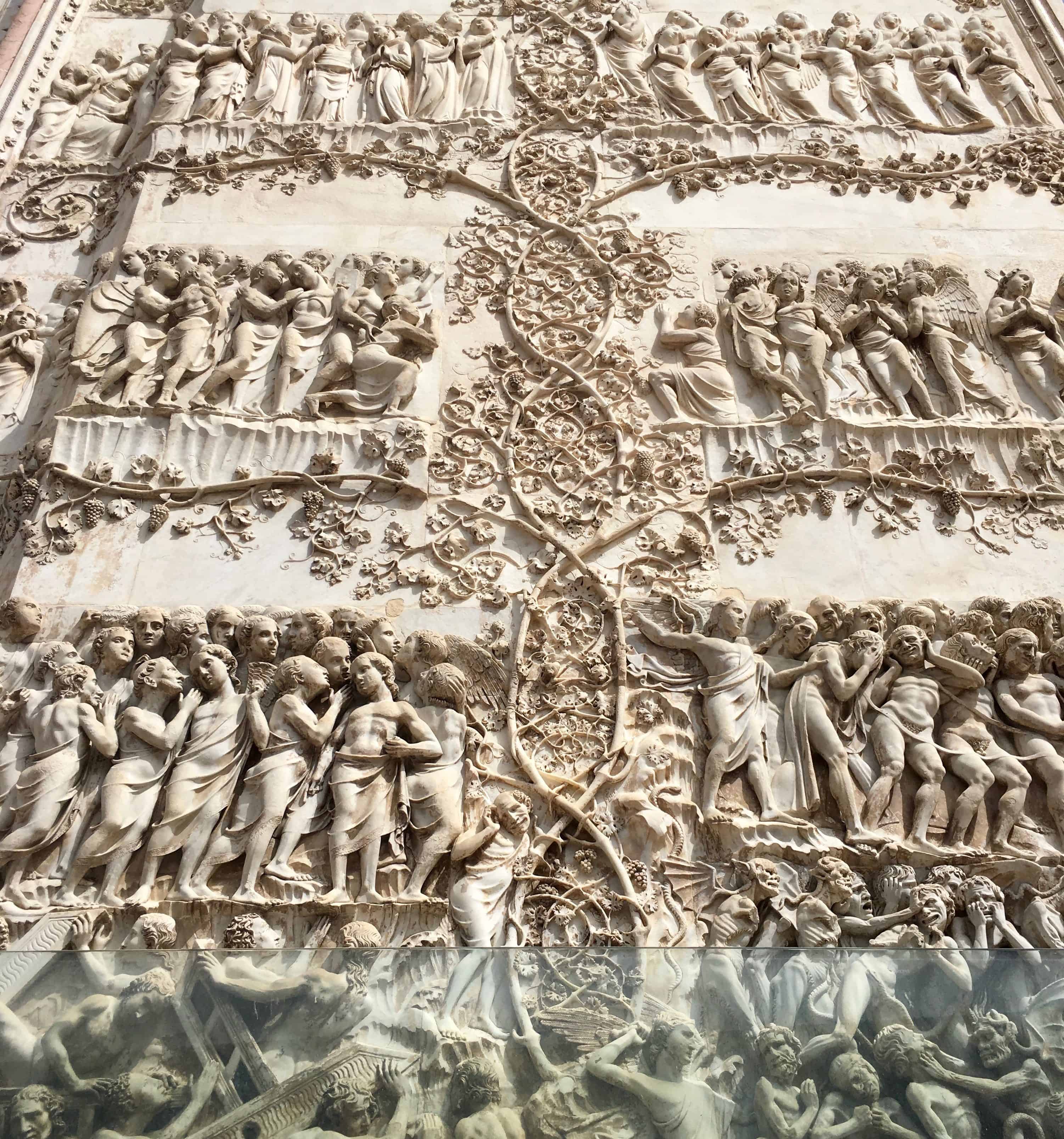
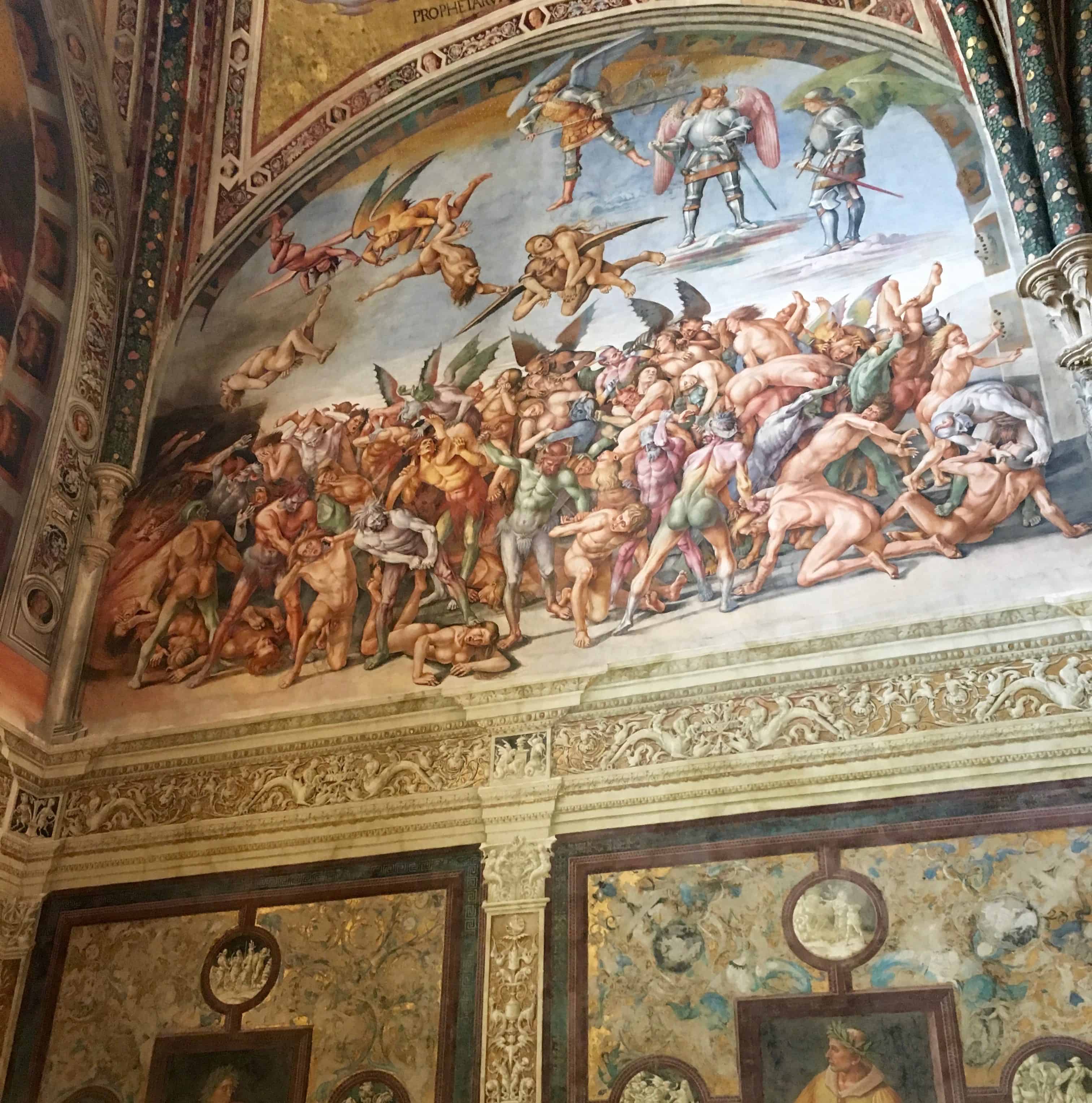
Duomo highlights: on approach, followed by a spellbinding façade and vivid frescoes inside.
San Gimignano
Parking at the foot of San Gimignano and dragging our bags up the hill into town is nearly the death of us (you can actually drive in, drop bags and drive out – something we’ll make a point of doing next time). Once our breathing has returned to normal, we start our wanderings of this tiny town at Piazza del Duomo, surrounded by the city’s fourteen medieval towers.

Eight hundred years ago, there were more than 70 of these towers, which were built as signs of wealth and prestige by competing local families. Today there are fourteen still standing. A wrong turn on our approach to San Gimignano takes us down a road with outstanding views of this unique skyline.
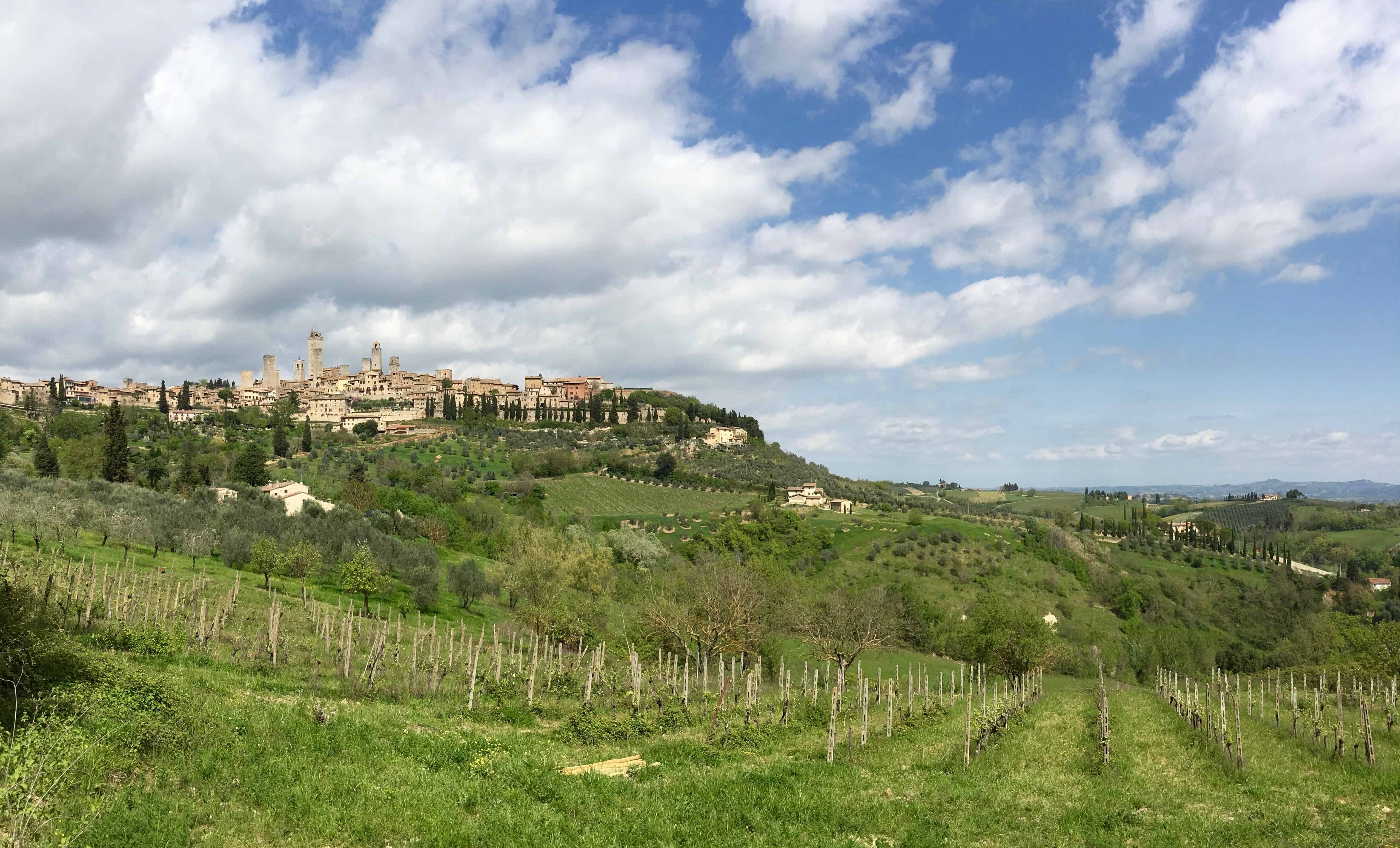
San Gimi’s Collegiata houses some excellent frescoes and an interesting audio tour explaining them. It’s packed in the ancient town by day but as night draws in, it becomes ghostly silent and we spend the evening wandering the ambient streets before enjoying the delicious fare and local tipple at tiny restaurant Peruca.

The next morning, we stroll the city walls, traversing cobbled gradients and steep slopes that offer great views over the surrounding countryside.
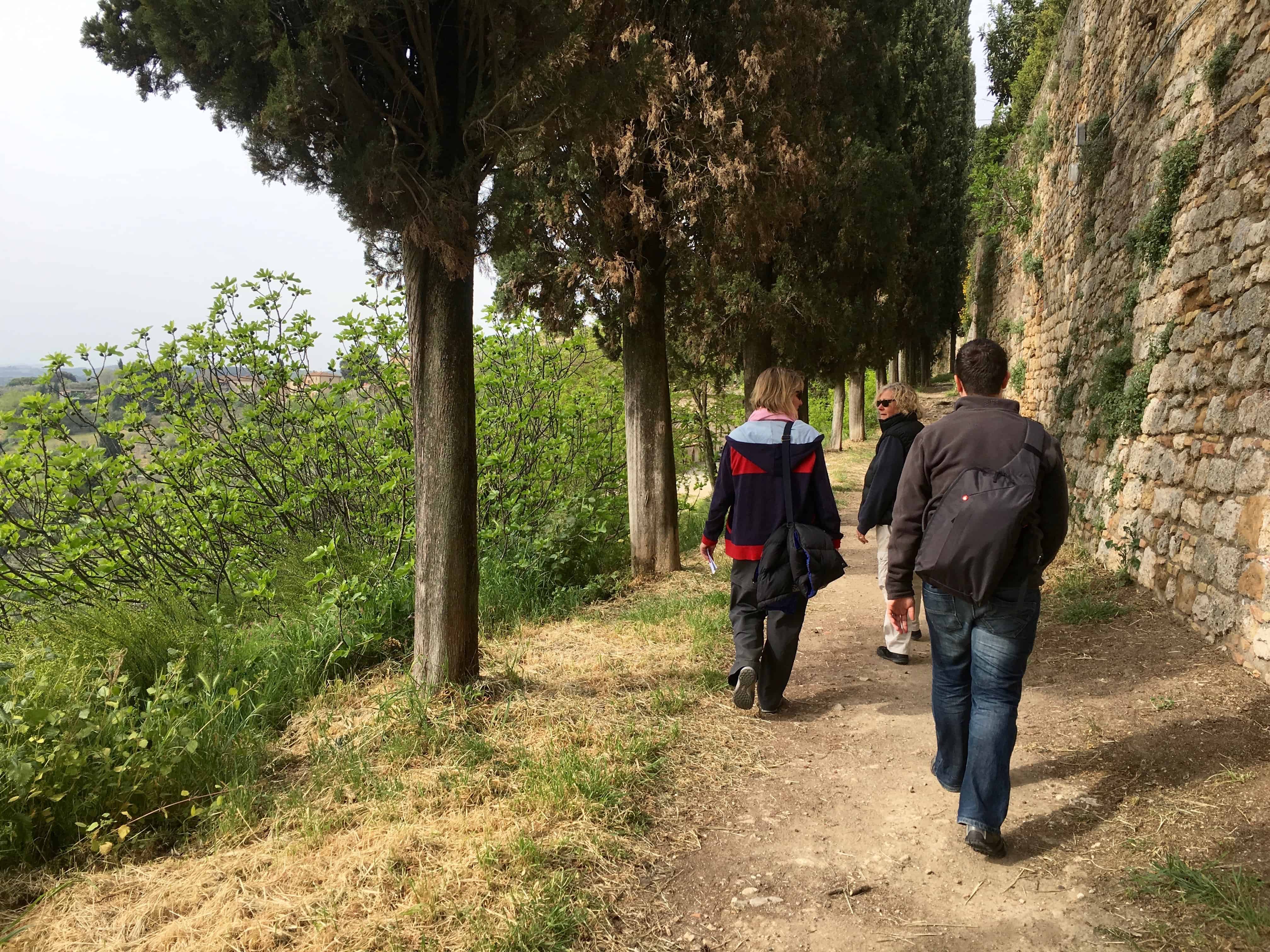
Siena
While many people use Siena as a base for trips to the nearby vineyards of Chianti, there’s plenty in this attractive city to pique the interest. We’ve got just a couple of hours to play with so we muster the energy, board a bus up the hill this time, and set off to see some of the highlights.
We eat lunch overlooking the striking black and white striped Duomo before enjoying the interior, which showcases works by Bernini, Donatello and Michelangelo. A parade of Popes’ heads watch over the congregation from above the choir. We step through an unassuming doorway into the kaleidoscopic Piccolomini Library, where the walls and ceiling vie with illuminated choir books. Even the floor of the cathedral is covered in marble mosaic artistry. It’s beautiful and busy and we’re overwhelmed by the time we emerge.



Siena’s eye-wateringly ornate cathedral and library.
And so we wind up our medieval hill town hopping adventure sipping beer in one of Europe’s greatest medieval squares, the Piazza del Campo (‘square’ is a misnomer really, the Piazza is a giant semi-circle), surrounded by stunning old buildings, and dominated by the Palazzo Pubblico and its impressive Torre del Mangia.
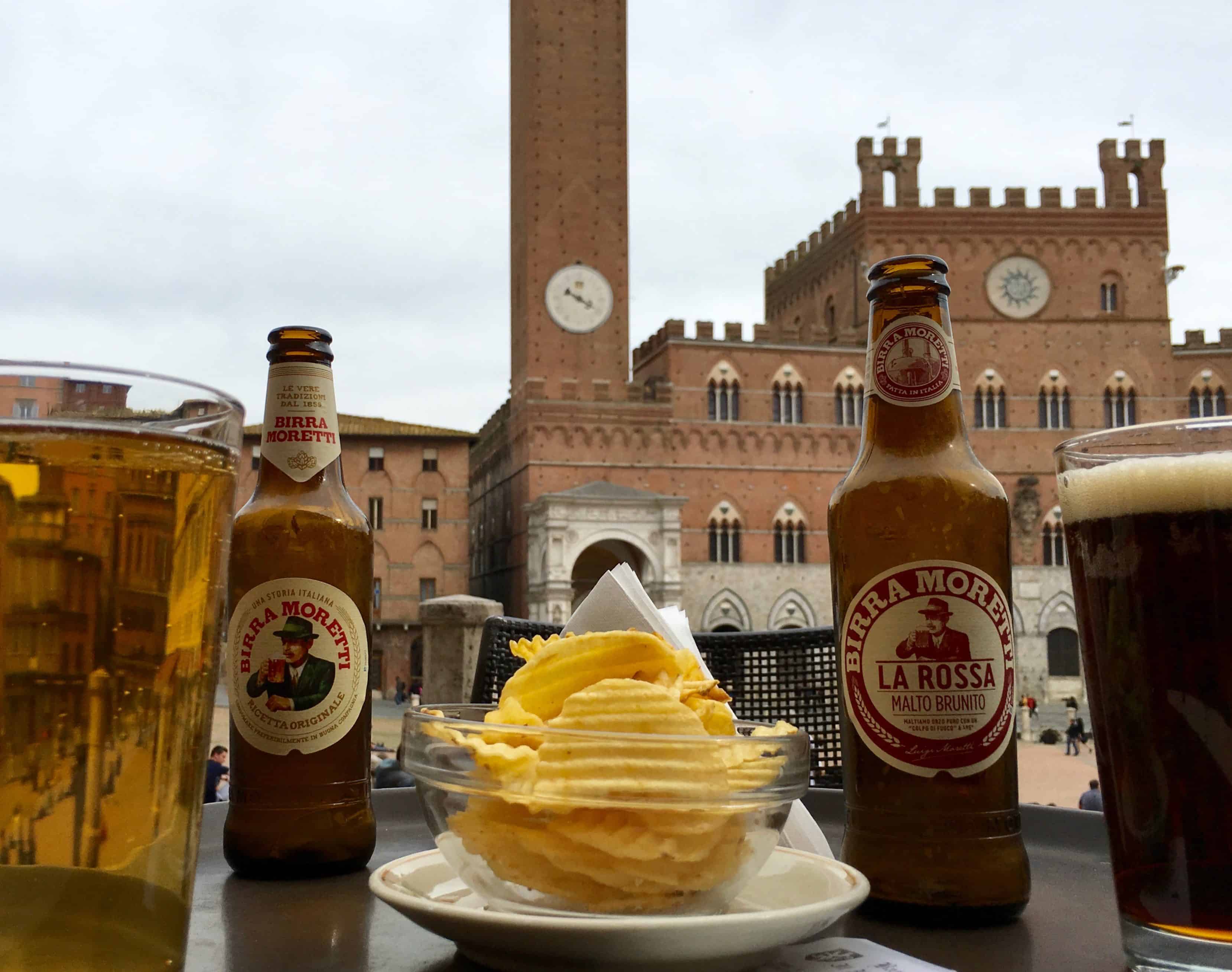
It’s been a whirlwind road trip and it may take weeks for our thigh muscles to relax but it’s been an epic experience of Italy’s quintessential hill towns. Plus all that hill climbing is the perfect justification for more pizza, pasta and wine!
Good to know
Driving: While the approach is often stunning, it’s not advised to try driving into a medieval hill town – you’re looking at steep inclines, one way streets, narrow laneways, and people traffic everywhere, particularly in summer. Also, many medieval towns have a ZTL (Zona Traffico Limitado) – you can be fined for driving inside the zone if you’re not a resident or don’t have a permit.
Parking: A challenge in most hill towns, so it’s a good idea to plan ahead and know where the car parks are and how much they charge. The hill towns we visited had car parks near the train station (if there was one), and at locations near gates on the outskirts of town. Based on our experience, knowing where they are doesn’t necessarily equate to ‘easy to find’; we found having a look at Google Earth really helped us understand the lie of the land.
Do: Take part or take in the age-old Italian custom of la passeggiata, a late afternoon ritual stroll through the main streets of town, where locals enjoy the last rays of the sun and catch up on the local gossip. This was one of our favourite times of day, and we’d normally find a nice al fresco cafe/bar, order a vino and watch la passeggiata unfold.
Speaking of wine: Where there’s a hill town, there’s usually wine from ancient local vineyards. Notable local tipples we tried along the way include Assisi Rosso, Urbino’s tasty Verdicchio white wine, San Gimignano’s moreish Vernaccia, and dry white Orvieto Classico. Another great thing about the hill towns we visited, and Italy more generally, is that most bars and cafes will provide free nibbles with your vino, often crisps, but sometimes more elaborate snacks like crostini or bruschetta.
*Orvieto is on the UNESCO World Heritage Tentative List.
